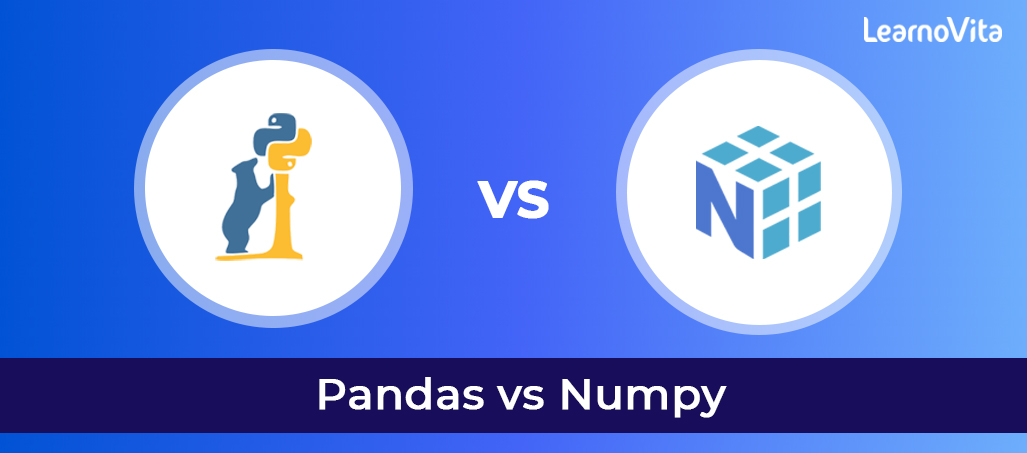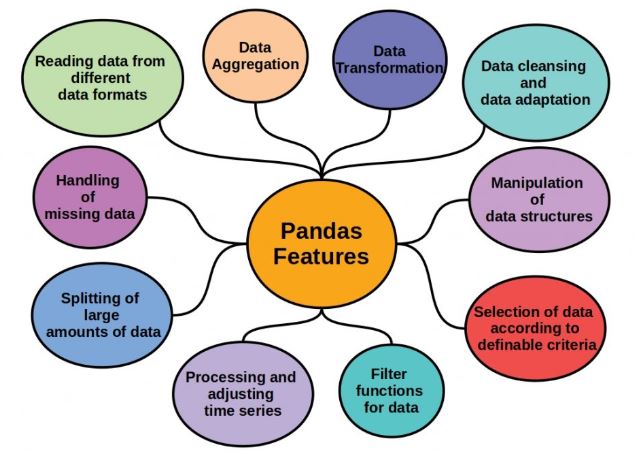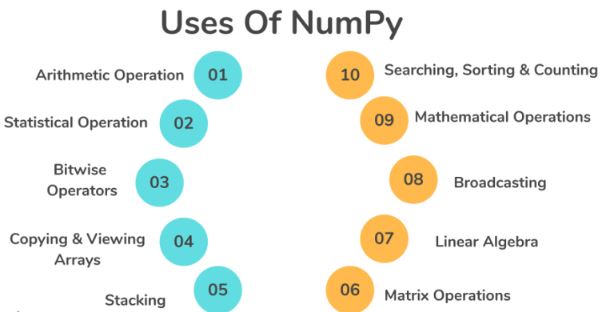- What is Dimension Reduction? | Know the techniques
- Top Data Science Software Tools
- What is Data Scientist? | Know the skills required
- What is Data Scientist ? A Complete Overview
- Know the difference between R and Python
- What are the skills required for Data Science? | Know more about it
- What is Python Data Visualization ? : A Complete guide
- Data science and Business Analytics? : All you need to know [ OverView ]
- Supervised Learning Workflow and Algorithms | A Definitive Guide with Best Practices [ OverView ]
- Open Datasets for Machine Learning | A Complete Guide For Beginners with Best Practices
- What is Data Cleaning | The Ultimate Guide for Data Cleaning , Benefits [ OverView ]
- What is Data Normalization and Why it is Important | Expert’s Top Picks
- What does the Yield keyword do and How to use Yield in python ? [ OverView ]
- What is Dimensionality Reduction? : ( A Complete Guide with Best Practices )
- What You Need to Know About Inferential Statistics to Boost Your Career in Data Science | Expert’s Top Picks
- Most Effective Data Collection Methods | A Complete Beginners Guide | REAL-TIME Examples
- Most Popular Python Toolkit : Step-By-Step Process with REAL-TIME Examples
- Advantages of Python over Java in Data Science | Expert’s Top Picks [ OverView ]
- What Does a Data Analyst Do? : Everything You Need to Know | Expert’s Top Picks | Free Guide Tutorial
- How To Use Python Lambda Functions | A Complete Beginners Guide [ OverView ]
- Most Popular Data Science Tools | A Complete Beginners Guide | REAL-TIME Examples
- What is Seaborn in Python ? : A Complete Guide For Beginners & REAL-TIME Examples
- Stepwise Regression | Step-By-Step Process with REAL-TIME Examples
- Skewness vs Kurtosis : Comparision and Differences | Which Should You Learn?
- What is the Future scope of Data Science ? : Comprehensive Guide [ For Freshers and Experience ]
- Confusion Matrix in Python Sklearn | A Complete Beginners Guide | REAL-TIME Examples
- Polynomial Regression | All you need to know [ Job & Future ]
- What is a Web Crawler? : Expert’s Top Picks | Everything You Need to Know
- Pandas vs Numpy | What to learn and Why? : All you need to know
- What Is Data Wrangling? : Step-By-Step Process | Required Skills [ OverView ]
- What Does a Data Scientist Do? : Step-By-Step Process
- Data Analyst Salary in India [For Freshers and Experience]
- Elasticsearch vs Solr | Difference You Should Know
- Tools of R Programming | A Complete Guide with Best Practices
- How To Install Jenkins on Ubuntu | Free Guide Tutorial
- Skills Required to Become a Data Scientist | A Complete Guide with Best Practices
- Applications of Deep Learning in Daily Life : A Complete Guide with Best Practices
- Ridge and Lasso Regression (L1 and L2 regularization) Explained Using Python – Expert’s Top Picks
- Simple Linear Regression | Expert’s Top Picks
- Dispersion in Statistics – Comprehensive Guide
- Future Scope of Machine Learning | Everything You Need to Know
- What is Data Analysis ? Expert’s Top Picks
- Covariance vs Correlation | Difference You Should Know
- Highest Paying Jobs in India [ Job & Future ]
- What is Data Collection | Step-By-Step Process
- What Is Data Processing ? A Step-By-Step Guide
- Data Analyst Job Description ( A Complete Guide with Best Practices )
- What is Data ? All you need to know [ OverView ]
- What Is Cleaning Data ?
- What is Data Scrubbing?
- Data Science vs Data Analytics vs Machine Learning
- How to Use IF ELSE Statements in Python?
- What are the Analytical Skills Necessary for a Successful Career in Data Science?
- Python Career Opportunities
- Top Reasons To Learn Python
- Python Generators
- Advantages and Disadvantages of Python Programming Language
- Python vs R vs SAS
- What is Logistic Regression?
- Why Python Is Essential for Data Analysis and Data Science
- Data Mining Vs Statistics
- Role of Citizen Data Scientists in Today’s Business
- What is Normality Test in Minitab?
- Reasons You Should Learn R, Python, and Hadoop
- A Day in the Life of a Data Scientist
- Top Data Science Programming Languages
- Top Python Libraries For Data Science
- Machine Learning Vs Deep Learning
- Big Data vs Data Science
- Why Data Science Matters And How It Powers Business Value?
- Top Data Science Books for Beginners and Advanced Data Scientist
- Data Mining Vs. Machine Learning
- The Importance of Machine Learning for Data Scientists
- What is Data Science?
- Python Keywords
- What is Dimension Reduction? | Know the techniques
- Top Data Science Software Tools
- What is Data Scientist? | Know the skills required
- What is Data Scientist ? A Complete Overview
- Know the difference between R and Python
- What are the skills required for Data Science? | Know more about it
- What is Python Data Visualization ? : A Complete guide
- Data science and Business Analytics? : All you need to know [ OverView ]
- Supervised Learning Workflow and Algorithms | A Definitive Guide with Best Practices [ OverView ]
- Open Datasets for Machine Learning | A Complete Guide For Beginners with Best Practices
- What is Data Cleaning | The Ultimate Guide for Data Cleaning , Benefits [ OverView ]
- What is Data Normalization and Why it is Important | Expert’s Top Picks
- What does the Yield keyword do and How to use Yield in python ? [ OverView ]
- What is Dimensionality Reduction? : ( A Complete Guide with Best Practices )
- What You Need to Know About Inferential Statistics to Boost Your Career in Data Science | Expert’s Top Picks
- Most Effective Data Collection Methods | A Complete Beginners Guide | REAL-TIME Examples
- Most Popular Python Toolkit : Step-By-Step Process with REAL-TIME Examples
- Advantages of Python over Java in Data Science | Expert’s Top Picks [ OverView ]
- What Does a Data Analyst Do? : Everything You Need to Know | Expert’s Top Picks | Free Guide Tutorial
- How To Use Python Lambda Functions | A Complete Beginners Guide [ OverView ]
- Most Popular Data Science Tools | A Complete Beginners Guide | REAL-TIME Examples
- What is Seaborn in Python ? : A Complete Guide For Beginners & REAL-TIME Examples
- Stepwise Regression | Step-By-Step Process with REAL-TIME Examples
- Skewness vs Kurtosis : Comparision and Differences | Which Should You Learn?
- What is the Future scope of Data Science ? : Comprehensive Guide [ For Freshers and Experience ]
- Confusion Matrix in Python Sklearn | A Complete Beginners Guide | REAL-TIME Examples
- Polynomial Regression | All you need to know [ Job & Future ]
- What is a Web Crawler? : Expert’s Top Picks | Everything You Need to Know
- Pandas vs Numpy | What to learn and Why? : All you need to know
- What Is Data Wrangling? : Step-By-Step Process | Required Skills [ OverView ]
- What Does a Data Scientist Do? : Step-By-Step Process
- Data Analyst Salary in India [For Freshers and Experience]
- Elasticsearch vs Solr | Difference You Should Know
- Tools of R Programming | A Complete Guide with Best Practices
- How To Install Jenkins on Ubuntu | Free Guide Tutorial
- Skills Required to Become a Data Scientist | A Complete Guide with Best Practices
- Applications of Deep Learning in Daily Life : A Complete Guide with Best Practices
- Ridge and Lasso Regression (L1 and L2 regularization) Explained Using Python – Expert’s Top Picks
- Simple Linear Regression | Expert’s Top Picks
- Dispersion in Statistics – Comprehensive Guide
- Future Scope of Machine Learning | Everything You Need to Know
- What is Data Analysis ? Expert’s Top Picks
- Covariance vs Correlation | Difference You Should Know
- Highest Paying Jobs in India [ Job & Future ]
- What is Data Collection | Step-By-Step Process
- What Is Data Processing ? A Step-By-Step Guide
- Data Analyst Job Description ( A Complete Guide with Best Practices )
- What is Data ? All you need to know [ OverView ]
- What Is Cleaning Data ?
- What is Data Scrubbing?
- Data Science vs Data Analytics vs Machine Learning
- How to Use IF ELSE Statements in Python?
- What are the Analytical Skills Necessary for a Successful Career in Data Science?
- Python Career Opportunities
- Top Reasons To Learn Python
- Python Generators
- Advantages and Disadvantages of Python Programming Language
- Python vs R vs SAS
- What is Logistic Regression?
- Why Python Is Essential for Data Analysis and Data Science
- Data Mining Vs Statistics
- Role of Citizen Data Scientists in Today’s Business
- What is Normality Test in Minitab?
- Reasons You Should Learn R, Python, and Hadoop
- A Day in the Life of a Data Scientist
- Top Data Science Programming Languages
- Top Python Libraries For Data Science
- Machine Learning Vs Deep Learning
- Big Data vs Data Science
- Why Data Science Matters And How It Powers Business Value?
- Top Data Science Books for Beginners and Advanced Data Scientist
- Data Mining Vs. Machine Learning
- The Importance of Machine Learning for Data Scientists
- What is Data Science?
- Python Keywords

Pandas vs Numpy | What to learn and Why? : All you need to know
Last updated on 31st Oct 2022, Artciles, Blog, Data Science
- In this article you will learn:
- 1.Introduction to Pandas.
- 2.Key Features of Pandas.
- 3.Prologue to NumPy.
- 4.Key Features of NumPy.
- 5.Pandas versus Numpy: Head to Head Comparison.
- 6.Which is better: NumPy or Pandas?
- 7.Conclusion.
Introduction to Pandas:
Pandas is one of the most popular programming libraries of a Python which can be utilized for information control and examination as it gives a stretched out information designs to hold the various sorts of named and social information and furthermore permits the ton of tasks like combining, joining, reshaping and connecting information. It is the open source library and has been based on top of a NumPy bundle of Python .Delivered under a three-proviso BSD permit, Pandas brings the assortment of information designs and tasks to be table for the control of mathematical tables and also time series. The expression “Pandas”comes from an expression “Board Data”. “Board Data” is the term which is utilized to depict an informational indexes that are incorporate perceptions throughout a various time-frames for similar people. Can investigate the store of a Pandas utilizing a accompanying connection.
Key Features of a Pandas:
Since know somewhat concerning what are Pandas is let us investigate a portion of a key highlights it brings to table:
- Pandas can help us in a reshaping and turning of a datasets.
- It can likewise help us in a blending and aslo joining of a datasets.
- The DataFrame object of a Pandas permits the control of an information alongside ordering.
- Pandas also provides excellent assistance for information organization and coordinated treatment of missing data from databases.
- Additionally a plenty of a devices are given by the Pandas to perusing and composing information between in-memory information structures and a distinctive record designs.
- Pandas provides a help for information filtration.
- Highlights like a mark based cutting, extravagant ordering and subsetting of a huge informational collections are be likewise given by a Pandas.
- Gathering by a motor which permits the split apply and join procedure on an informational indexes is likewise given by a Pandas.

Prologue to NumPy:
NumPy is one of more impressive programming library of a Python which has been in heavy use over a most recent few years. NumPy is an open-source library which has the great deal of donors. The authority site makes a reference to that NumPy is an essential bundle for logical registering with Python. NumPy can be used to efficiently conduct operations on large multi-layered exhibitions and grids. In addition, NumPy likewise gives us the humongous assortment of undeniable a level numerical capacities for example the wrongdoing() work the sort() work and so forth to work on these clusters and aslo components. NumPy is the Python library which gives various determined articles and a combination of a schedules for the quicker procedure on clusters.”Numeric” is a precursor of NumPy and was created by a Jim Hugunin.
Key Features of NumPy:
Since know somewhat concerning what are NumPy is let us investigate a portion of a key highlights it brings to table:
- One of most striking elements of a NumPy is the “ndarray” for managing n layered clusters and an information structures.
- Programs identified with the networks and n layered exhibits can be run a quite quickly utilizing NumPy.
- It gives a successful direct variable based on math calculations by depending on a BLAS and LAPACK .
- NumPy can be tended to as the widespread information structure in an OpenCV for pictures, channel parts, and an extricated include focuses and so forth.
- One of not great highlights of a NumPy is that it doesn’t permit simple adding of an information sections to exhibits as fast as a Python does.
- NumPy contains the ton of devices for an incorporation of a code from C/C++ and Fortran.
- NumPy displays are all of the same type. It includes a multi-layered container for non-exclusive information.
- Complex procedures on a direct variable based math, Fourier change and arbitrary numbers can likewise be a performed utilizing NumPy.
- NumPy likewise comprises a Broadcasting capacities. This makes it an incredibly valuable while managing the varieties of lopsided shapes as it communicates a state of more modest exhibits as per bigger ones .
- NumPy has an information type definition ability to work with the changed data sets.
Pandas versus Numpy: Head to Head Comparison:
- Examination Parameter.
- Pandas.
- Numpy.
Created By:
- Pandas was created by a Wes McKinney.
- NumPy was created by a Travis Oliphant.
Year Of Release:
- Pandas was delivered in a year – 2008.
- NumPy was delivered in a year – 2005.
Essential Objective to Use:
- Pandas is for most part utilized for an information investigation undertakings in a Python.
- NumPy is for most part utilized for working with the Numerical qualities as it makes it easy to apply numerical capacities.

Information Compatibility:
- Pandas library functions are admirably for a numeric, letter sets and heterogeneous sorts of information all while.
- Numpy library works a better with just mathematical information, effective capacity and fastly performs a numerical procedures on cluster based and lattice based on numeric qualities.
Execution:
- If quantity of columns of a dataset is in excess of 500,000 then at that point presentation of Pandas is superior to a NumPy.
- NumPy can be supposed to be a quicker in execution than a Pandas up to 50,000 lines and less of a dataset.
Apparatuses:
- DataFrames and Series are tmost amazing assets of a Pandas.
- Clusters are most amazing asset of a NumPy.
Memory Usage:
- When compared to NumPy, Pandas consumes more RAM.
- NumPy has a lesser memory utilization contrasted with a Pandas.
Objects:
- DataFrames are two layered Objects given by a Pandas.
- NumPy gives n layered exhibits Data Type (dtype) and so forth as a items.
Ordering:
- In Series of Pandas, ordering is somewhat more slow contrasted with an Arrays in NumPy.
- The ordering of a NumPy exhibits is quicker than that of a Pandas Series.
- Utilization or Application in an Organizations.
- Pandas are being utilized in great deal of famous associations like a Trivago, Kaidee, Abeja Inc and some more.
- Instacart, SendGrid, Walmart, Tokopedia and lot of more associations utilize a NumPy.
Modern Coverage:
- Pandas has higher industry application contrasted with a NumPy as referenced in 73 organization stacks and 46 engineer stacks.
- NumPy has lower industry application contrasted with the Pandas as referenced in a 62 organization stacks and 32 designer stacks.
Conclusion:
The two Pandas and NumPy improve on a grid increase and along these lines are in effect vigorously utilized in a field of Data Science particularly model advancements in the Machine Learning. Henceforth, would suggest every one of a maturing software engineers of today who need to become a Data Scientists or Machine Learning Researchers or Machine Learning Practitioners to learn both libraries.
